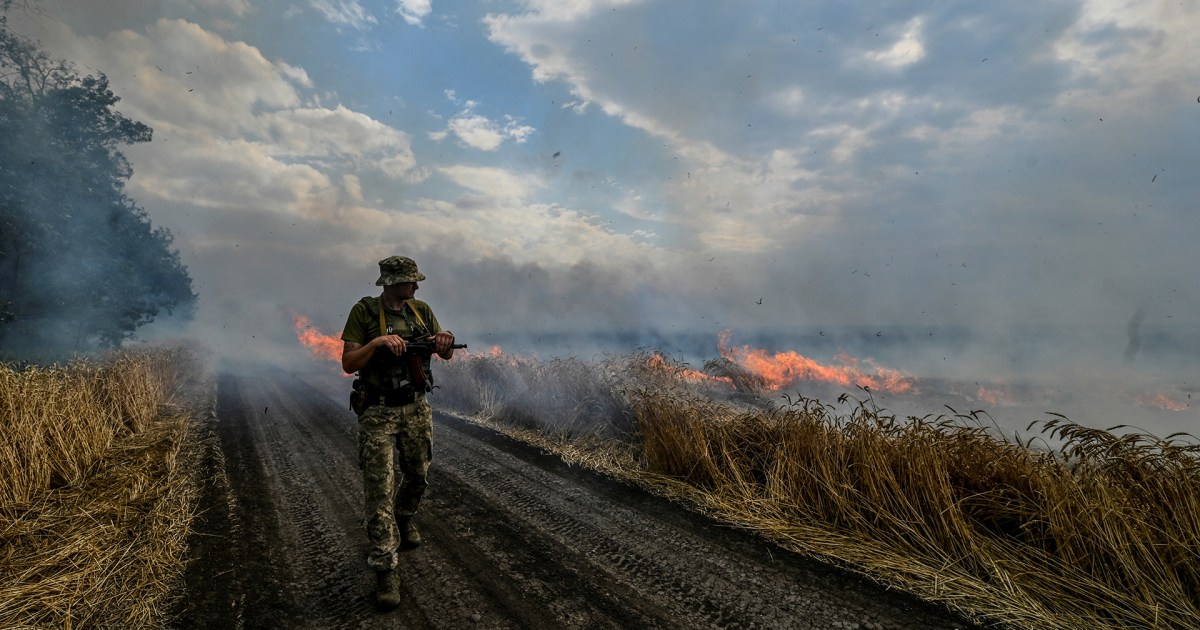The war in Ukraine is about to enter its sixth month, and despite everything that is going on about Russia crossing the red lines set by the West regarding its behavior during the war, and about the West crossing the red lines set by Russia through its military assistance to Ukraine, the real red lines for both sides have not yet been crossed.
This is what Liana Fix, director of programs at the German Körber Foundation, and Michael Kemage, professor of history at the Catholic American University, see in a joint article for them in the American magazine “Foreign Affairs,” during which they tried to anticipate the consequences of the conflict in Ukraine and what might result from it. A broader confrontation between the West and Russia if it gets out of hand.
Respect the red lines
The authors argue that since the start of the war, both sides have established a set of invisible rules that have not been announced but are nonetheless real, and include Russia's acceptance of heavy weapons supplies and intelligence support provided by allies to Ukraine, but it does not accept the direct participation of Western forces in the battlefields.
As for the hidden rules of war set by the West, it includes the Western countries reluctantly accepting the Russian conventional war inside the Ukrainian territory - while ensuring that Moscow comes out of that war defeated - as long as the conflict does not lead to the use of weapons of mass destruction.
So far, both sides of the conflict have respected these invisible rules, which indicates that US Presidents Joe Biden and Russia's Vladimir Putin do not want to expand the circle of war.
Escalation potential
Despite all of the above - and the authors' words - the outbreak of a wider war remains possible, especially in the absence of an international mechanism that controls the conflict. The role of the United Nations was marginal, while the European Union sided with one of the parties to the conflict, while the United States is not in a position to end the conflict. War is on its own terms, and the same applies to Russia and Ukraine.
The article indicated that the talks between Kyiv and Moscow had collapsed, and despite the ongoing efforts to end the conflict, there have been no US-Russian diplomatic efforts since the outbreak of the war on February 24 of this year, and if we take all of the above into consideration and add to it the size and complexity of the conflict and the number of countries Sharing and new techniques used in it, this mixture becomes toxic.
He explained that the common desire of Presidents Putin and Biden to avoid expanding the war zone does not guarantee that it will not get out of control, because any conflict may get out of control even if none of its parties made a deliberate decision to escalate or use nuclear weapons.
The authors said that it is unlikely that a nuclear attack would occur during the war, although its occurrence remains possible given the Russian capabilities and the ambiguity of Moscow’s principles related to the use of nuclear weapons, and therefore the accidental escalation may be more frightening than the deliberate escalation, because the latter includes tools that enable it to be reduced. .
Cold War style
In the opinion of the authors, the events of the Cold War may be a useful guide to what may lead to the outcome of the Ukraine war. Given the length of the conflict during the Cold War and the margin of error of political and military leaders on both sides, it was remarkable that the confrontation between the United States and the Soviet Union ended peacefully. But behind the miracle that was achieved through humanity’s surviving the consequences of a conflict between two nuclear powers, there are dark corners of the conflict, moments of confrontation and accidents of accidental escalation that marked the second half of the twentieth century.
The article suggested that the conflict in Ukraine would follow the pattern of the Cold War, witnessing stages in which the conflict is managed well, followed by other stages in which the conflict intensifies in a sudden and chaotic manner.
In their article, the authors urged decision-makers and diplomats on both sides of the conflict to prepare for the unintended escalation scenario more seriously, rather than preparing for the possibility of an intentional escalation.
They stressed that the fog of war - which has increased in intensity due to the speed and unreliability of social media - is real and may obscure the vision of even the best strategies.

